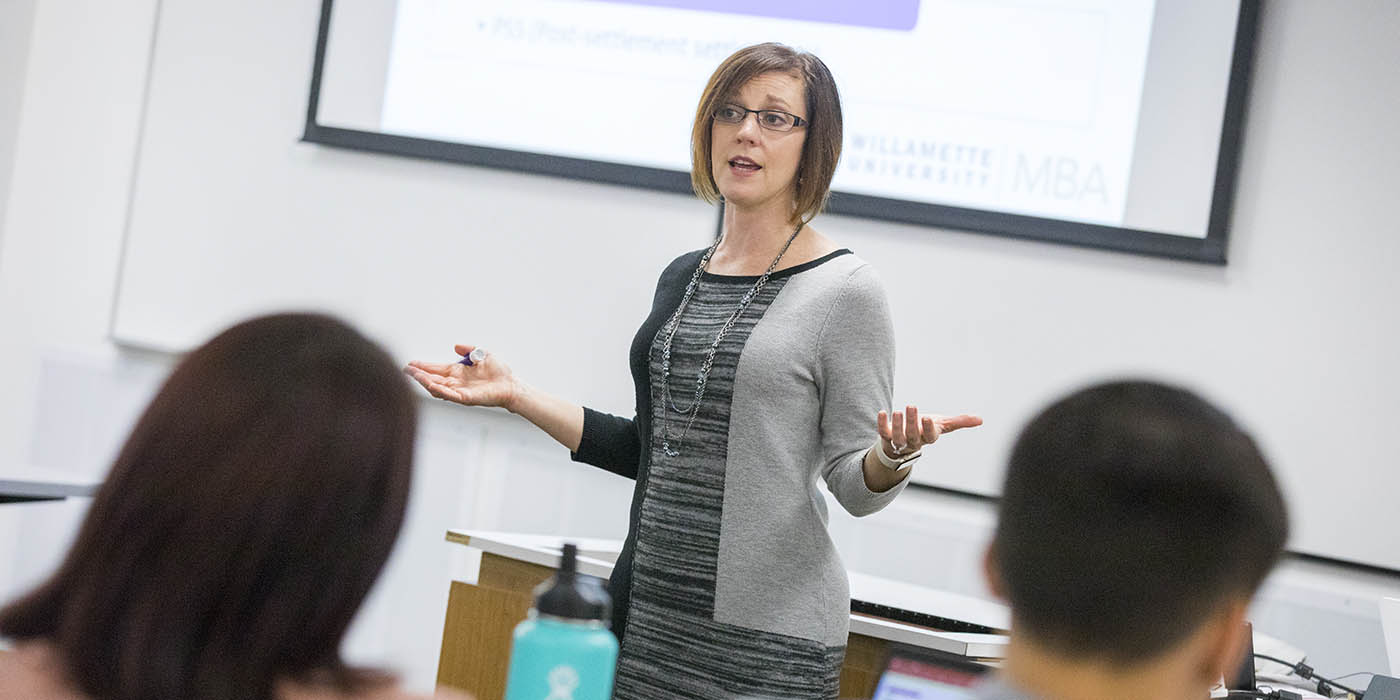Technology promised to make our lives more convenient, easier, and less stressful. But according to Ashley Nixon, Professor of Human Resource Management and Organizational Behavior at the Atkinson Graduate School of Management, technology may actually be increasing our stress — especially in the workplace.
As technology blurs the boundaries between our personal and professional lives, workers and organizations alike are dealing with unprecedented stressors.
There's a name for this new affliction: "technostress." Nixon points to a few common causes of techostress: the pressure to always be "on," the expectation to work outside of normal business hours, and the ambiguity that comes with digital communication. Plus, managers can now use tools to monitor their employees in new and intrusive ways.
Nixon's research shows that these workplace stresses can have real health effects, including anxiety, depression, and even carpal tunnel.
Nixon is an expert on human resources, leadership, and organizational behavior with over 20 years of research experience focused on occupational stress. She recently presented on technostress and workplace well-being to the Michigan Department of Labor.
We reached out to Professor Nixon to learn more about how technology and stress intersect in the workplace and what we can do about it.
1. What is technostress and how does one know if they have it?

Nixon: Technostress refers to stressors in the workplace that are facilitated by or created by our use of technology. Techno stressors are often facilitated by constant connectivity and technology-mediated communication.
Constant connectivity causes increased work-life conflict. Our work is now being conducted during times that would historically have been preserved for our private lives, leading to increased workload and work hours. For many of us, we check work emails early in the morning to late at night, expanding the timeframe in which we are mentally activated by work-based information.
With technology-mediated communication — including emails, texts, slack messages, etc. — we end up being able to communicate with many people quickly, but psychological phenomena such as negativity bias and toxic disinhibition are more likely to disrupt our interpersonal relationships by leading to mistreatment and conflict.
2. How does technostress affect employees in the workplace?
Nixon: When we experience techno stressors and a negative emotional response occurs (anger or frustration), our body activates our sympathetic nervous system, the fight or flight response. While this activation is normal, when it is too frequently activated it has a negative impact on our health and well-being.
Techno stressors routinely lead to employee strains, which are the negative psychological, physiological, and behavioral outcomes of this stress process. These can include burnout, anxiety, diminished job satisfaction or engagement, as well as illness and accidents.
3. What consequences does technostress have for organizations and businesses?
Nixon: The primary goal of leadership in organizations is to have an engaged workforce. When employees are experiencing rampant technostress, they are far more likely to be disengaged, potentially through presenteeism (being at work but unable to work at full capacity) or absenteeism, as being stressed for extended periods of time suppresses our immune systems and facilitates illness. Likewise, employees suffering from extensive techno stress may leave the organization to find work elsewhere or because of disability. With these employees’ exit, the organization loses a tremendous amount of knowledge and competency that will take a lot of time and money to replace.
4. What trends are we seeing around technostress in the wake of the COVID-19 pandemic?
Nixon: The COVID-19 pandemic jumpstarted a lot of discussion and research in the technostress area, and suddenly technology was one of the few mechanisms we had to communicate with one another. But many of us quickly realized the fatigue and burnout that accompanied the increased use of technology for work during the pandemic. I suspect that technostress and the research examining it will continue to increase given the extensive adoption of technology and the increasing use of hybrid work environments.
5. What can employers and employees do to alleviate technostress?
Nixon: A major thing that organizations can do to alleviate technostress is to establish a culture that encourages healthy boundaries with workplace technology, such as:
- disengaging in the evenings and weekends to allow recovery from work stressors
- fostering interpersonal relationships where positive intent is assumed in any interaction
- providing coaching and support for employees who are suffering from the negative impact of techno stressors.
Finally here are three tips for employees to deal with technostress:
- engage in behavior that promotes personal resiliency
- establish work life boundaries
- use available support systems (such as employee assistance programs) when the impact of techno stressors becomes problematic for them.



